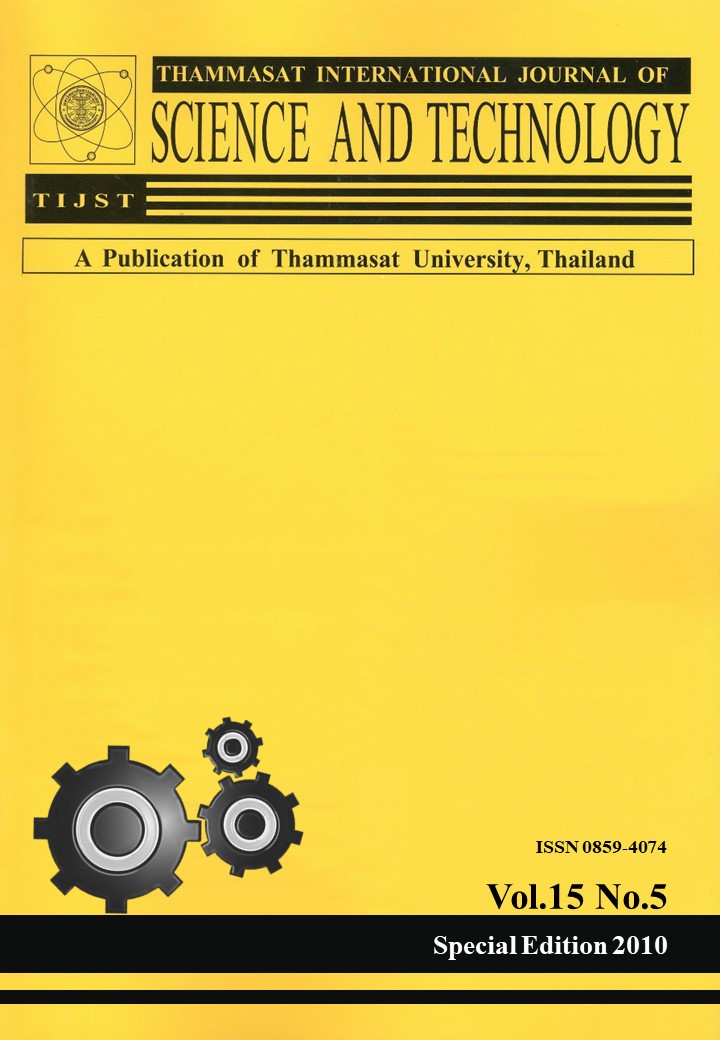Hydrothermal Synthesis of Tungsten Oxide Nanowires: Effect of Precursor’s Condition
Main Article Content
บทคัดย่อ
Hexagonal WO3 nanowires have been hydrothermally fabricated in the presence of K2SO4 using tungstic acid hydrate as a precursor. It is evident that the K2SO4 played a crucial role in the formation of the uniform hexagonal WO3 nanowires with an average diameter of 7
nm and length up to several hundreds nanometers. Based on comparative experiments under different precursor condition, it was found that residual cation and anion of the starting materials and also pH of the precursor’s condition had strong effects on crystal structure and morphology of the resulting products. In spite of the excess amount of K2SO4 used, platelets of WO3 and triclinic crystallites were formed as a mixture indicating that the residual ions present in the precursor’s condition controlled the reaction route during hydrothermal process of the tungstic acid hydrate.


